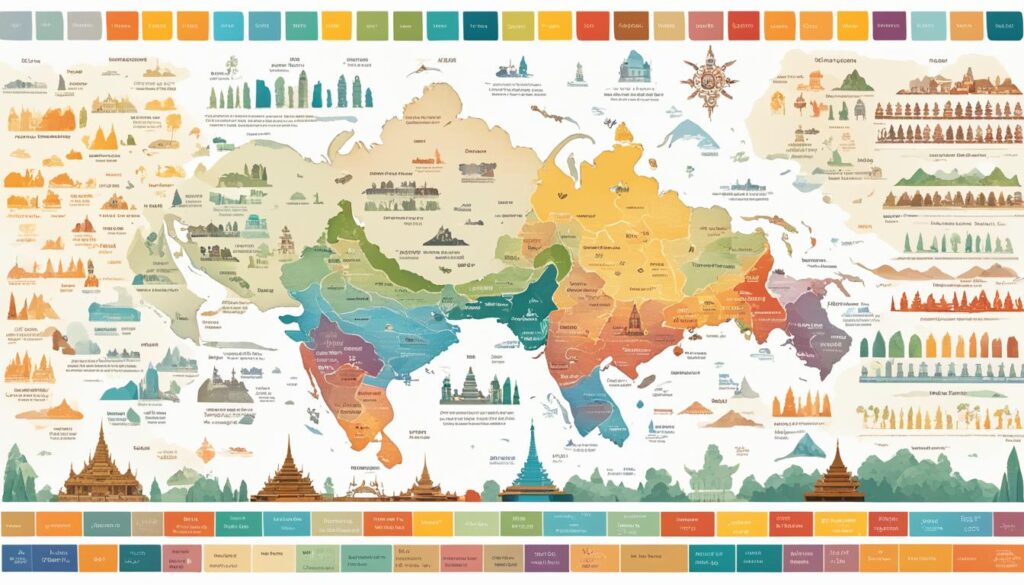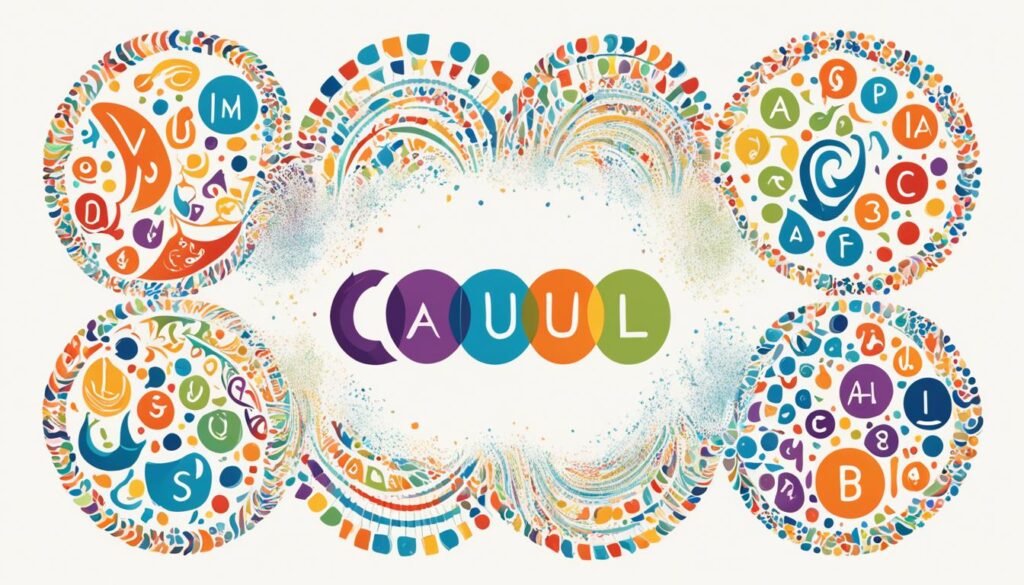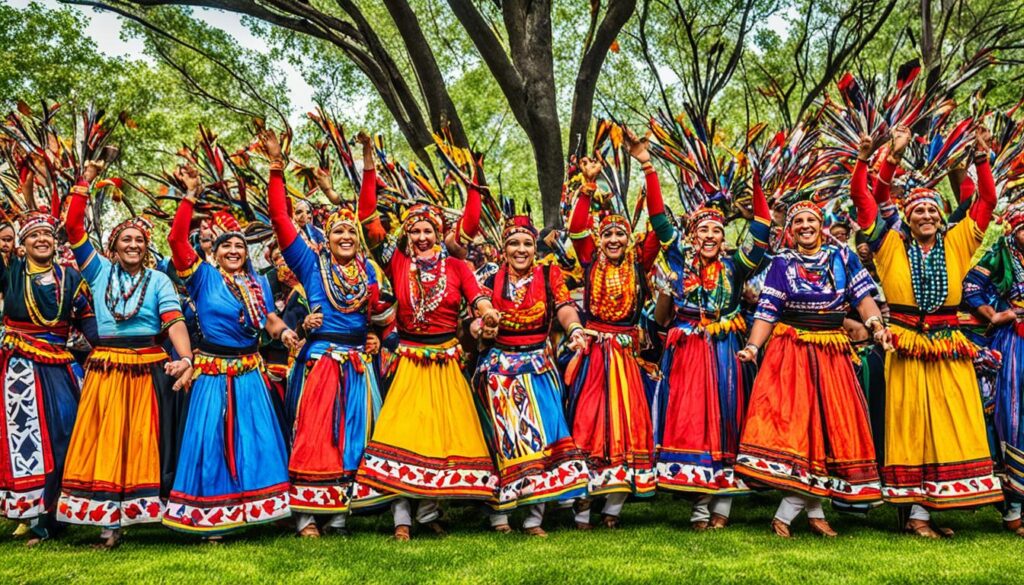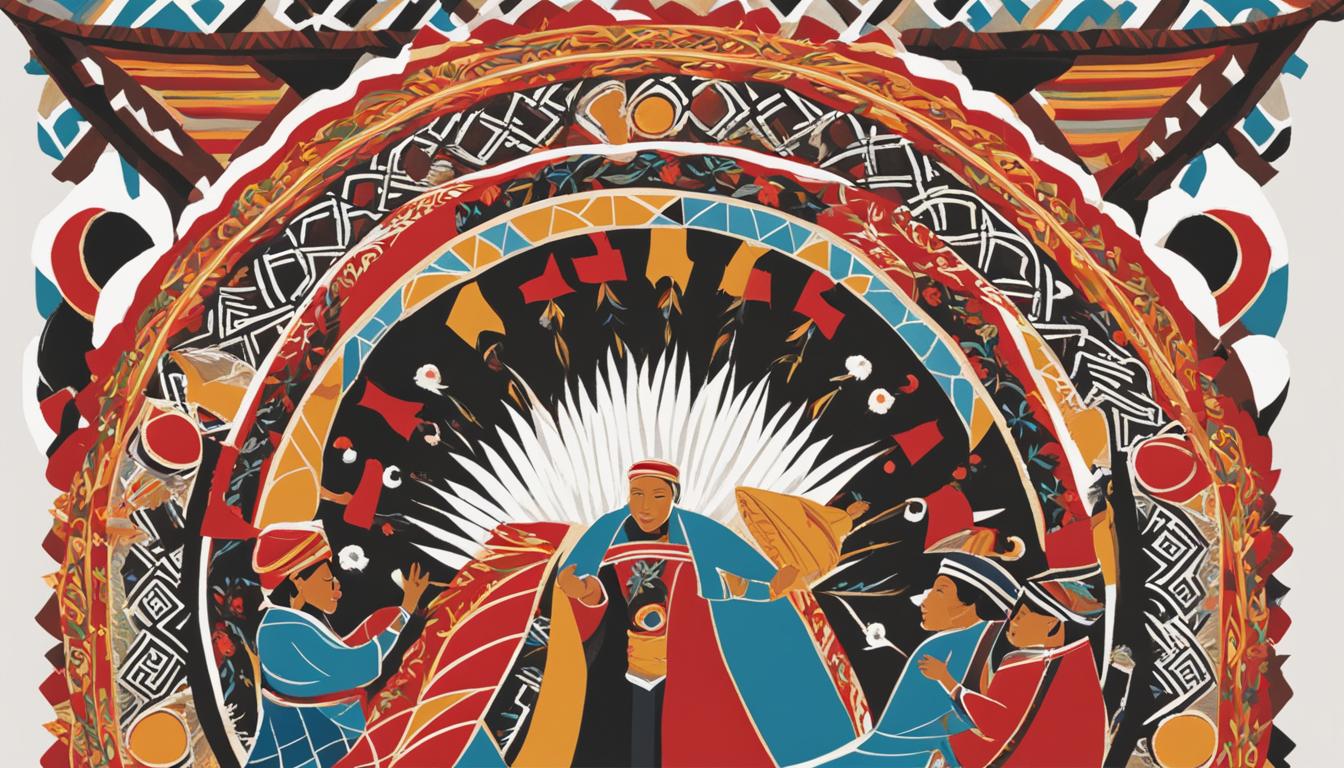Did you know that the Nyah Kur (Chaobon) language, an indigenous Austroasiatic language spoken by the Nyah Kur people in Thailand, is at risk of disappearing? Despite its rich history and cultural significance, this unique language is facing challenges that threaten its survival. In this article, we will explore the features, distribution, history, and preservation efforts of the Nyah Kur language, shedding light on the language’s importance to the Nyah Kur community and the wider cultural landscape of Thailand.
Distribution of Nyah Kur Language
The Nyah Kur language is primarily spoken in the central and northeastern provinces of Thailand, with its highest concentration of speakers residing in Chaiyaphum Province. Other regions where Nyah Kur is spoken include Nakhon Ratchasima Province, Phetchabun Province, and Phitsanulok Province.
The distribution of the Nyah Kur language reflects the regional diversity of the Nyah Kur community. These areas encompass both urban and rural settings, with a significant number of speakers living in agricultural communities.
Within these provinces, the Nyah Kur language exhibits distinct dialectal variations. The dialects of Chaiyaphum and Petchabun are considered northern dialects, while those in Nakhon Ratchasima and Phitsanulok are classified as southern dialects. These dialects reflect the local cultures and historical influences in each region, contributing to the linguistic richness of the Nyah Kur language.
Regional Distribution of Nyah Kur Language
| Province | Dialect |
|---|---|
| Chaiyaphum Province | Chaiyaphum dialect (Northern dialect) |
| Nakhon Ratchasima Province | Nakhon Ratchasima dialect (Southern dialect) |
| Phetchabun Province | Petchabun dialect (Northern dialect) |
| Phitsanulok Province | Phitsanulok dialect (Southern dialect) |
Classification and History of Nyah Kur Language
The Nyah Kur language belongs to the Monic branch of the Austroasiatic language family. It shares lexical and structural similarities with the Mon language, another prominent member of the Monic language family. The Nyah Kur people are descendants of the Mon ethnic group, who settled in present-day Thailand after their empire was overthrown by the Khmer Empire. Over centuries, the Nyah Kur language evolved independently from Old Mon, leading to the development of distinct dialects and variations within the Nyah Kur community.
While the Nyah Kur language has been spoken for generations, it was formally recognized and documented by linguists in the early 20th century. It was through this recognition that the linguistic relationship between Nyah Kur and Mon was established. This linguistic connection sheds light on the historical ties between the Nyah Kur people and the broader Monic language family.
Efforts are currently underway to further explore the history and linguistic classification of the Nyah Kur language within the context of the Monic language family. Linguists and researchers are working closely with the Nyah Kur community to document the language’s historical development, linguistic features, and its place in the Monic language family. The goal is to deepen our understanding of the Nyah Kur language and its significance within the broader linguistic landscape of Thailand.

Key Points:
- The Nyah Kur language belongs to the Monic branch of the Austroasiatic language family.
- It shares lexical and structural similarities with the Mon language.
- The Nyah Kur people are descendants of the Mon ethnic group.
- The language has developed independently from Old Mon, resulting in distinct dialects and variations.
- Linguists recognized the Nyah Kur language in the early 20th century and established its linguistic relationship with Mon.
- Ongoing efforts aim to document the history and linguistic classification of Nyah Kur within the Monic language family.
Features of Nyah Kur Language
The Nyah Kur language, spoken by the Nyah Kur people in Thailand, possesses unique phonological characteristics, consonants, vowels, and grammar that make it distinct from other languages.
Phonology
Nyah Kur language phonology encompasses the study of its speech sounds. Consonants in Nyah Kur include stops, fricatives, nasals, approximants, and trills. These consonant sounds combine in various ways to form distinct words and meanings. Vowels are classified into front, central, and back categories and can also be pronounced with breathy voice, adding a nuanced quality to the language.
Consonants in Nyah Kur Language
The table below illustrates the consonant sounds found in the Nyah Kur language:
| Consonant Type | Example |
|---|---|
| Stops | p, t, k |
| Fricatives | s, h |
| Nasals | m, n, ŋ |
| Approximants | l, w, j |
| Trills | r |
Vowels in Nyah Kur Language
The Nyah Kur language features a range of vowel sounds. The following table presents examples of Nyah Kur vowels:
| Vowel Category | Example |
|---|---|
| Front Vowels | i, e, ɛ |
| Central Vowels | ə |
| Back Vowels | u, o, ɔ, a |

Nyah Kur Language Grammar
The grammar of the Nyah Kur language demonstrates its unique rules and structures. Nyah Kur follows particular patterns of word formation and sentence construction. Verb conjugation, noun declension, and word order are essential aspects of Nyah Kur’s grammar. These elements shape the language’s syntax and contribute to its overall linguistic structure.
Understanding the features of Nyah Kur language, including its phonological system, consonants, vowels, and grammar, provides valuable insights into the linguistic richness of this indigenous Austroasiatic language.
Nyah Kur Language Preservation
Efforts are underway to preserve and document the Nyah Kur language, ensuring its survival for future generations. These preservation initiatives encompass various projects and resources aimed at safeguarding the unique linguistic heritage of the Nyah Kur community.
Language Resources
One essential aspect of Nyah Kur language preservation is the creation of language resources. Dictionaries, grammars, and educational materials are being developed to provide comprehensive guidance and support for learning and understanding the language. These resources enable individuals to delve deeper into the intricacies of Nyah Kur and contribute to its continued use and appreciation.
The Nyah Kur Alphabet
A significant development in the preservation efforts of the Nyah Kur language is the establishment of a dedicated Nyah Kur alphabet. This alphabet has been carefully crafted to facilitate reading and writing in Nyah Kur, empowering individuals to express themselves in their native tongue and encouraging literacy within the community.
Documentation Collaborations
The Nyah Kur language is being extensively documented through collaborations between linguists, researchers, and the Nyah Kur community. Recordings, interviews, and linguistic analysis are being conducted to capture the nuances and intricacies of the language. These efforts not only create valuable linguistic records but also foster a deeper understanding of the cultural significance and heritage intertwined with the Nyah Kur language.
“Preserving the Nyah Kur language is not just about safeguarding words, but also about honoring a rich cultural identity that has been passed down through generations.”
Through these preservation initiatives, the Nyah Kur language is being celebrated and promoted, ensuring that its unique heritage endures for generations to come.
Nyah Kur Language Community and Cultural Significance
The Nyah Kur language and community are intricately connected, playing a fundamental role in shaping the cultural identity of the Nyah Kur people. Language serves as a vibrant medium of cultural expression, anchoring individuals to their rich heritage and fostering a deep sense of belonging.
One cannot discuss the Nyah Kur cultural landscape without acknowledging the profound influence of Nyah Kur language traditions. Music, dance, and folklore form an indispensable part of the Nyah Kur cultural tapestry, with the language intricately interwoven into these artistic expressions. Through these cultural traditions, the Nyah Kur people not only preserve and celebrate their valued customs but also transmit significant cultural knowledge and values across generations.
“Language is the soul of culture, the vessel through which our collective wisdom and stories are shared with one another.”
The Nyah Kur language community functions as a vibrant social and cultural hub, fostering intergenerational knowledge transfer and the perpetuation of cherished cultural practices. It is within these communities that the intricate nuances of the language are preserved, nurtured, and passed down from elders to younger generations.
The Nyah Kur language community acts as a guardian of cultural heritage, ensuring the survival and vitality of Nyah Kur traditions and customs for years to come.

Cultural Significance of the Nyah Kur Language
The Nyah Kur language holds immense cultural significance for the Nyah Kur people, serving as a powerful symbol of their identity and unique heritage. By preserving and promoting the language, the Nyah Kur community safeguards their distinct cultural legacy and ensures its continuity into the future.
The Nyah Kur language is more than just a means of communication—it is a testament to the resilience, spirit, and collective memory of the Nyah Kur people.
| Cultural Traditions | Language Role |
|---|---|
| Music | The Nyah Kur language infuses traditional music, songs, and lyrics, preserving ancient melodies and oral histories. |
| Dance | Nyah Kur dance performances are often accompanied by the language, conveying narratives, emotions, and traditional values. |
| Folklore | Nyah Kur folklore, with its rich tapestry of myths, legends, and moral stories, is intricately woven with the language, enabling the transmission of cultural wisdom. |
By actively engaging with and promoting the Nyah Kur language, the community upholds their cultural heritage, reinforces their collective identity, and nurtures a sense of pride and belonging among Nyah Kur individuals.
The Nyah Kur language is an embodiment of the unique cultural essence of the Nyah Kur people, reflecting their profound connection to their ancestral roots and the vibrant tapestry of their historical journey.
Challenges and Future of Nyah Kur Language
The Nyah Kur language faces several challenges that pose a threat to its longevity and preservation. One of the significant challenges is language endangerment, with a decline in the number of first-language speakers, especially among younger generations. The impact of language shift towards majority languages like Thai is prominent, resulting in a reduced usage and transmission of Nyah Kur.
Despite these challenges, there is a positive outlook and a strong desire among community members to revitalize the Nyah Kur language. Efforts are underway to preserve and promote the language through various initiatives. Language revitalization programs focus on the development of language resources, including dictionaries, educational materials, and cultural preservation projects.
Communities are actively engaged in organizing events and community-driven initiatives to raise awareness and interest in the Nyah Kur language. Educational programs cater to different age groups, fostering language skills and cultural pride. These endeavors aim to instill a sense of identity and belonging among Nyah Kur speakers, encouraging the use and revitalization of the language.
To ensure the future of the Nyah Kur language, sustained support and engagement from the Nyah Kur community and wider society are crucial. The collaboration between linguists, researchers, community members, and educational institutions plays a vital role in ensuring the language’s vitality and sustainability. By working together, we can preserve the rich linguistic heritage of the Nyah Kur language for generations to come.
| Challenges | Solutions |
|---|---|
| Language Endangerment | Revitalization efforts through language resources, community initiatives, and educational programs. |
| Language Shift | Promoting the use of Nyah Kur in daily life, instilling cultural pride, and fostering language skills through community-driven initiatives. |
| Limited Number of Speakers | Creating opportunities for intergenerational language transmission, integrating the Nyah Kur language into educational curricula, and organizing community events to foster language use. |
Conclusion
The Nyah Kur language, an indigenous Austroasiatic language spoken by the Nyah Kur people in Thailand, holds significant cultural and linguistic importance. Belonging to the Monic branch of the Austroasiatic language family and closely related to the Mon language, Nyah Kur exhibits unique features and regional dialects. Although spoken by a relatively small number of individuals, efforts are underway to preserve and revitalize the language for future generations.
Language documentation, development of language resources, and cultural initiatives are crucial in safeguarding the Nyah Kur language. The language serves as a vital link to the cultural heritage and identity of the Nyah Kur community, as it intertwines with their traditional practices, music, dance, and folklore. By preserving and promoting the Nyah Kur language, the community ensures the preservation of their cultural heritage as well.
Despite the challenges of language endangerment and a shift towards majority languages, the Nyah Kur language community remains motivated and proactive in revitalization efforts. The development of language resources, such as dictionaries and educational materials, alongside community initiatives and educational programs, contribute to the preservation of Nyah Kur. Continued support and attention are necessary to sustain the Nyah Kur language and its vital role in connecting generations and preserving cultural traditions.
FAQ
What is the Nyah Kur language?
The Nyah Kur language, also known as Chao-bon, is an indigenous Austroasiatic language spoken by the Nyah Kur people in Thailand. It is closely related to the Mon language and shares similarities with other Monic languages.
Where is the Nyah Kur language spoken?
The Nyah Kur language is primarily spoken in the central and northeastern provinces of Thailand, with the majority of speakers residing in Chaiyaphum Province. Other areas where Nyah Kur is spoken include Nakhon Ratchasima Province, Phetchabun Province, and Phitsanulok Province.
What are the dialects of the Nyah Kur language?
The Nyah Kur language exhibits regional variation, with distinct dialects found in different provinces. The dialects of Chaiyaphum and Petchabun are considered northern dialects, while those in Nakhon Ratchasima and Phitsanulok are classified as southern dialects.
How is the Nyah Kur language classified and what is its history?
The Nyah Kur language belongs to the Monic branch of the Austroasiatic language family. It is closely related to the Mon language and shares lexical and structural similarities. The Nyah Kur people are descendants of the Mon ethnic group who sought refuge in present-day Thailand after their empire was overthrown by the Khmer Empire.
What are the features of the Nyah Kur language?
The Nyah Kur language has a distinct phonological system with consonant and vowel sounds. Consonants in the language include stops, fricatives, nasals, approximants, and trills. Vowels are classified into front, central, and back categories, and can also be pronounced with breathy voice. The grammar of Nyah Kur follows its own rules and structure, with distinct patterns of word formation and sentence construction.
What efforts are being made to preserve the Nyah Kur language?
Efforts are being made to preserve and document the Nyah Kur language. Projects are underway to create language resources, including dictionaries, grammars, and educational materials. A Nyah Kur alphabet has been developed to aid in reading and writing the language. Additionally, linguists and researchers are working with the Nyah Kur community to document their language through recordings, interviews, and linguistic analysis.
What is the cultural significance of the Nyah Kur language?
The Nyah Kur language and community play an essential role in the cultural identity of the Nyah Kur people. Language is a vital aspect of cultural expression, connecting individuals to their heritage and fostering a sense of belonging. Nyah Kur cultural traditions, such as music, dance, and folklore, are often intertwined with the language and serve to preserve and transmit cultural values and knowledge.
What are the challenges and future of the Nyah Kur language?
The Nyah Kur language faces challenges including language endangerment and a shift towards majority languages such as Thai. Efforts are being made to revitalize the language through the development of language resources, community initiatives, and educational programs. The future of the Nyah Kur language depends on the continued support and engagement of the Nyah Kur community and wider society to ensure its vitality and sustainability.
